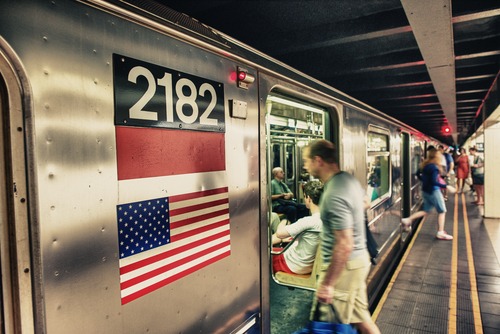
In an effort to keep transportation safe without slowing the flow of traffic, the New York City subway system, together with a series of collaborators in the federal, academic, and private sectors, is rolling out a testbed and series of biosensors to scan for chemical and biological threats.
The sensors come from the Chemical and Bio-Defense Testbed (CBT), a partnership project started by the U.S. Department of Homeland Security (DHS) Science and Technology Directorate (S&T). They are part of a technology known as Biowatch, which can detect and determine pathogens through DNA analysis over the course of between 12-36 hours. That said, the CBT’s goal is to eventually get a technology capable of a two-hour turnaround time from detection to confirmation.
Such rapid identification could help save lives and prevent spread.
“As North America’s leader in adopting technology for improving transportation safety and reliability, the MTA values its partnership with DHS to ensure that riders are protected from emerging threats,” Mark Dowd, Metropolitan Transportation Authority (MTA) Chief Innovation Officer, said. “Out of an abundance of caution, we embrace S&T’s expertise in evaluating detection protocols that could provide early notification should someone seek to threaten our customers.”
In the New York Subway system, this currently takes the form of eight secured cabinets, with the scanners to follow shortly. Different types of sensors can be installed within these testbeds. Some will collect samples on a filter and possibly analyze captured microscopic organisms such as anthrax bacteria. Others will hunt for characteristics that could indicate hazards among certain organisms.
All will be networked and monitored for alarms. If an alarm is triggered, its filter will be collected and studied at a lab.
“Multiple sensors using different physical principles to detect a threat would be ideal and provide higher confidence that something unusual may be happening,” Dr. Don Bansleben, S&T’s CBT program manager, said.
In addition to the biodetection sensors, the testbed includes environmental sensors, power and communication equipment, and a nearby command center for support. By utilizing all of these in a real-world environment, researchers will better understand how the technology actually performs. However, initial tests will focus on biological threats, as they are more difficult to detect early. The testbeds and their cabinets will be reusable for multiple studies.
“To keep up with evolving threats, S&T wants the subway testbed to be enduring because this will continually enable assessment of current and emerging chemical and biodefense-related detection and identification technologies, as well as evaluation of rapid subway response and mitigation actions,” Bansleben said.
During the study, researchers from S&T and the Massachusetts Institute of Technology (MIT) Lincoln Laboratory will track items such as false alarm rate, probability of detection, time to detection, and cost of ownership, along with environmental data such as temperature, pressure, relative humidity, wind speed, and direction. As part of the effort to counter biohazardous spread, S&T is investigating mitigation strategies like altering train position, speed and schedule, and particulate removal via filtration or liquid spray knockdown curtains and air curtains.
Installation of the biodetection sensors will occur later this summer and follow suit in stations beyond the subway by the end of 2022.
“If we are successfully able to identify a system that detects biological hazards correctly and efficiently, we will be able to help New York City and other cities improve their security, emergency planning, and readiness,” Bansleben said.
Participating in this effort are the S&T, MIT, the MTA New York City Transit (NYCT), the New York Police Department, the Port Authority of New York and New Jersey, and the New York City Department of Health and Mental Hygiene.




